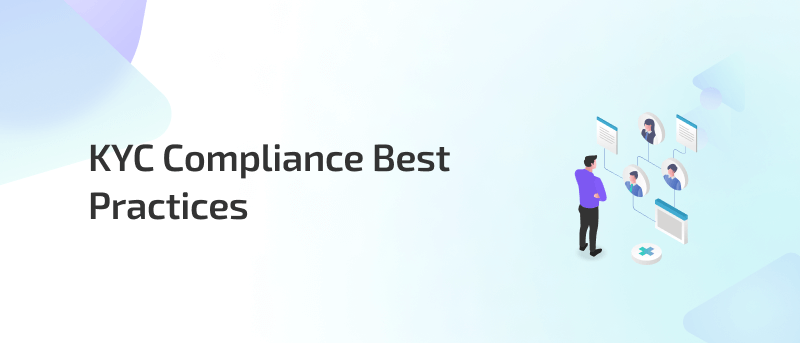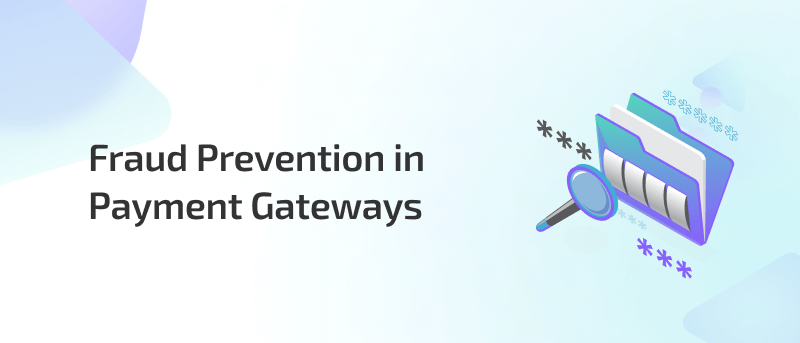.webp)
Published on
July 16, 2025
What is Compliance Governance? Key Differences & Framework
In this story

Accelerate AML Compliance: Meet Regulatory Demands with 80% Less Setup Time
.svg)
.svg)
In finance, governance refers to how an institution is directed, supervised, and held accountable. It defines who makes decisions, how they are made, and how performance and conduct are monitored. Strong governance ensures that financial institutions operate transparently, ethically, and in line with stakeholder interests.
In the MENA region, financial regulators increasingly view governance as a frontline defense against misconduct and regulatory breaches. It sets the foundation for effective compliance governance by ensuring leadership is aligned with legal and ethical obligations.
What is the Scope of Compliance?
Compliance in financial institutions refers to following laws, regulations, and internal policies. It ensures that business activities meet legal standards, especially in areas like anti-money laundering (AML), sanctions, and fraud prevention.
Key functions of a compliance program include:
- Identifying regulatory requirements
- Implementing controls to meet those requirements
- Monitoring, testing, and reporting on compliance performance
- Training staff and fostering a compliance culture
In the MENA region, compliance teams work under frameworks established by regulators such as the Saudi Central Bank, the CBUAE, and Qatar Financial Centre Regulatory Authority (QFCRA).
Compliance is operational in nature, it's about execution, enforcement, and response. Governance, by contrast, is strategic, it sets direction and ensures oversight. Both are essential, but they serve different roles.
Governance vs Compliance: How They Differ and Work Together
Though closely related, governance and compliance serve distinct purposes, the following table explains the difference between governance and compliance.
Governance vs Compliance
So the difference between governance and compliance is that governance sets the "why" and "how"; the principles, values, and leadership approach. Compliance, on the other hand, executes the "what"; the rules that must be followed.
In financial institutions, particularly in the MENA region, this distinction is crucial. Weak governance can result in poor compliance. Conversely, strong compliance processes without clear governance often lack direction or consistency. Together, they form the backbone of a robust governance and compliance system.
Comply quickly with local/global regulations with 80% less setup time
.svg)
.svg)
What is Compliance Governance?
Compliance governance is the integration of compliance functions into an organization’s overall governance structure. It ensures that regulatory adherence is managed effectively by aligning compliance with strategic oversight from senior leadership and the board.
- Compliance is governed at the highest levels, ensuring accountability.
- Clear reporting lines between compliance teams and executives.
- Focus on aligning compliance with business goals and risk management.
Why Compliance Governance is Critical
A solid governance regulatory compliance framework ensures:
- Regulatory compliance is consistently met.
- Senior management is accountable for compliance risks.
- Compliance is embedded into decision-making, not treated as a separate function.
- Financial and reputational risks are mitigated.
- Operational efficiency is improved through streamlined processes.
- Stakeholder confidence is strengthened through transparency.
- Risk management is enhanced through proactive compliance integration.
Building a Governance-Driven Compliance Strategy
Building an effective compliance governance strategy requires clear steps that integrate compliance into the core of an institution’s operations:
- Define Governance Structures: Establish a clear governance structure with defined roles and responsibilities for compliance oversight. Ensure that senior management, including the board, is involved in compliance decisions and accountable for compliance risks.
- Align Compliance with Business Objectives: Ensure that compliance strategies align with overall business goals. This involves understanding the business’s risk appetite and embedding compliance into day-to-day decision-making processes.
- Develop Strong Internal Controls: Implement robust internal controls to detect and prevent non-compliance. These controls should be regularly reviewed and updated in line with evolving regulations.
- Promote a Compliance Culture: Foster a culture of compliance across all levels of the organization. This includes regular training, clear communication about regulatory requirements, and strong leadership support for compliance initiatives.
- Implement Monitoring and Reporting Systems: Create systems to continuously monitor compliance and provide transparent reporting to senior management and regulators. This ensures any issues are identified and addressed promptly.
The Role of Technology in Governance-Driven Compliance
Tools like regulatory technology (RegTech) can automate compliance monitoring, improve reporting accuracy, and reduce human error.
Key benefits of RegTech include:
- Automated transaction monitoring and suspicious activity detection
- AI-driven risk assessments
- Real-time reporting and compliance tracking
Corporate Compliance and Governance: A Strategic Framework
A strong corporate compliance and governance framework is crucial for financial institutions to navigate the complexities of the regulatory landscape, especially in regions like MENA, where the regulatory environment is continually evolving.
1. Risk Identification and Assessment
The foundation of any effective governance system starts with understanding where the risks lie. Institutions must conduct a thorough risk assessment to identify internal and external threats that could impact compliance. This includes potential regulatory changes and risks arising from fraud or operational inefficiencies. By understanding the full scope of risk, governance leaders can implement specific measures to address them.
Learn more: AML Risk Assessment in the UAE: Laws, Compliance & Risks
2. Define Roles and Responsibilities
For governance regulatory compliance to function effectively, accountability must be clearly defined. Compliance is not a one-person job rather requires shared responsibility across the organization. Clear ownership of compliance duties should be assigned, ensuring that leadership, management, and staff know their roles and what is expected of them. This helps ensure that no one can evade responsibility for failing to meet compliance standards.
Read more: Fraud Prevention in the UAE: Key Areas and Solutions
3. Ethical Standards and Governance Principles
An organization’s ethical framework is the cornerstone of its compliance strategy. Establishing clear ethical standards helps guide decision-making and shapes the corporate culture. Key areas to address include conflict of interest, whistleblower protections, and transparency in decision-making. Setting these guidelines allows employees to understand the importance of compliance and ethical conduct in all business practices.
Read more: Identity Verification in the UAE: Processes and Key Insights
4. Collaboration Across Departments
One of the biggest challenges to governance and compliance is ensuring that all departments are aligned. Compliance isn’t isolated within a single department; it’s a shared responsibility. Establishing cross-departmental collaboration ensures that everyone, from the legal team to the operations team, works toward the same goal, maintaining compliance at every step. This unified approach enhances the efficiency of risk management efforts.
Read more: Politically Exposed Persons in the UAE and AML Compliance
5. Ongoing Evaluation and Adaptation
Regulatory requirements are not static, and neither should compliance strategies be. A framework that is rigid will quickly become outdated. Instead, it’s essential to establish a culture of continuous improvement. Regular reviews, updates based on new regulations, and feedback loops from all levels of the organization ensure that the compliance framework evolves to meet new challenges and risks.
Read more: KYC in Saudi Arabia: Regulations, Compliance & Penalties
6. Documentation and Enforcement
Once a compliance framework is in place, it must be documented clearly and enforced consistently. Everyone involved needs to be aware of the procedures and policies in place and understand their individual responsibilities. Regular training, frequent reminders, and strong enforcement measures keep the framework alive and effective, ensuring that compliance remains a priority at all levels of the institution.
Read more: Sanctions Screening in Saudi Arabia: Regulations, Challenges, and Best Practices
Governance and Compliance in Managing Risk
In finance, risk never stands still. To keep pace, governance and compliance must move together, actively shaping how risk is understood, addressed, and prevented.
1. Clear Rules, Fewer Violations: Governance ensures that policies are set. Compliance makes sure they’re followed. Together, they prevent regulatory breaches and reduce the risk of enforcement actions. When rules are well-defined and monitored, the chances of missteps shrink.
2. Fraud Governance Stops Scams Before They Start: A well-governed compliance setup identifies fraud risks early. It builds in checks, alerts, and internal review systems that detect red flags before damage is done. Fraud governance isn’t reactive, it’s preventative.
3. Controls That Actually Work: Governance frameworks set the tone for strong internal controls. The goal: make risk management automatic, not optional.
4. Compliance in Every Step: From customer onboarding to transaction monitoring, governance ensures that risk thinking is part of every function, not an afterthought.
5. Fast Decisions, Informed by Risk: Good governance gives leadership the visibility they need. When risk data flows freely and compliance insights are timely, leaders can act fast and smart.
6. No Gaps Between Teams: Risk doesn’t respect silos. That’s why governance requires coordination between legal, compliance, risk, and operations. Everyone has to see the same risks, speak the same language, and act with the same urgency.
7. Accountability Is Built-In: Effective compliance governance makes responsibilities clear. No confusion, no finger-pointing. When something goes wrong, it’s immediately clear who owns the fix and how to prevent it next time.
Compliance Governance Examples
Understanding compliance governance is one thing, seeing it applied is another. Here’s how real institutions are putting frameworks into practice to strengthen their financial and regulatory posture. Let’s explore the following compliance governance examples:
1. One Policy, Multiple Markets: A regional bank operating in the UAE, KSA, and Egypt unified its governance & compliance systems across branches. Instead of managing separate rules per country, it set one core compliance policy, with local adjustments layered in. This reduced duplication and improved audit readiness.
2. Governance and Ethics Under One Roof: An Islamic bank merged its Sharia board with its compliance oversight committee. Now, financial decisions are reviewed through both ethical and regulatory lenses. This approach to corporate governance compliance streamlined approvals and strengthened customer trust.
Final Thought
For too long, governance & compliance have been treated as isolated functions, compartments to consult after the real business is done. But in a region where financial ecosystems are becoming increasingly interconnected and regulatory regimes more assertive, this fragmented approach is no longer viable.
Compliance governance must now be seen as a cohesive operating principle, a mindset that guides how institutions manage risk, ensure transparency, and cultivate trust from within.
FAQs
Q1. How do you describe the purpose of governance and compliance in finance?
Governance and compliance in finance help ensure that financial institutions follow the rules, act ethically, and manage risks properly. They keep everything transparent, reduce the chances of fraud, and build trust with customers and regulators.
Q2. What is financial governance and compliance?
Financial governance and compliance ensure that financial institutions follow the right procedures, manage their resources responsibly, and stay within legal boundaries. This helps prevent fraud, promotes trust, and keeps everything running smoothly and transparently.
Q3. What is corporate governance compliance?
Corporate governance compliance is about making sure a company follows all the legal and ethical guidelines for how it should be run. It ensures the business is transparent, accountable, and operates in a way that’s fair to all stakeholders, from shareholders to customers.
Streamline Compliance: Achieve 80% Faster Setup for Fraud Prevention
.svg)
.svg)

How Aseel reduced onboarding time by more than 87% using FOCAL
Learn how FOCAL empowered Aseel to achieve new milestones.
.svg)
.svg)
Mastering Fraud Prevention: A Comprehensive Guide for KSA and MENA Businesses
51% of organizations fell victim to fraud in the last two years, don't be caught off guard, act proactively.
.svg)
.svg)
Featured blog posts
.svg)
AI-Driven Precision in Fraud Risk and AML Compliance
.svg)
.svg)

.svg)
.png)






.webp)




.svg)

_FastestImplementation_Small-Business_GoLiveTime.png)

_HighPerformer_Small-Business_HighPerformer.png)
_Leader_Leader.png)



%20(1).webp)